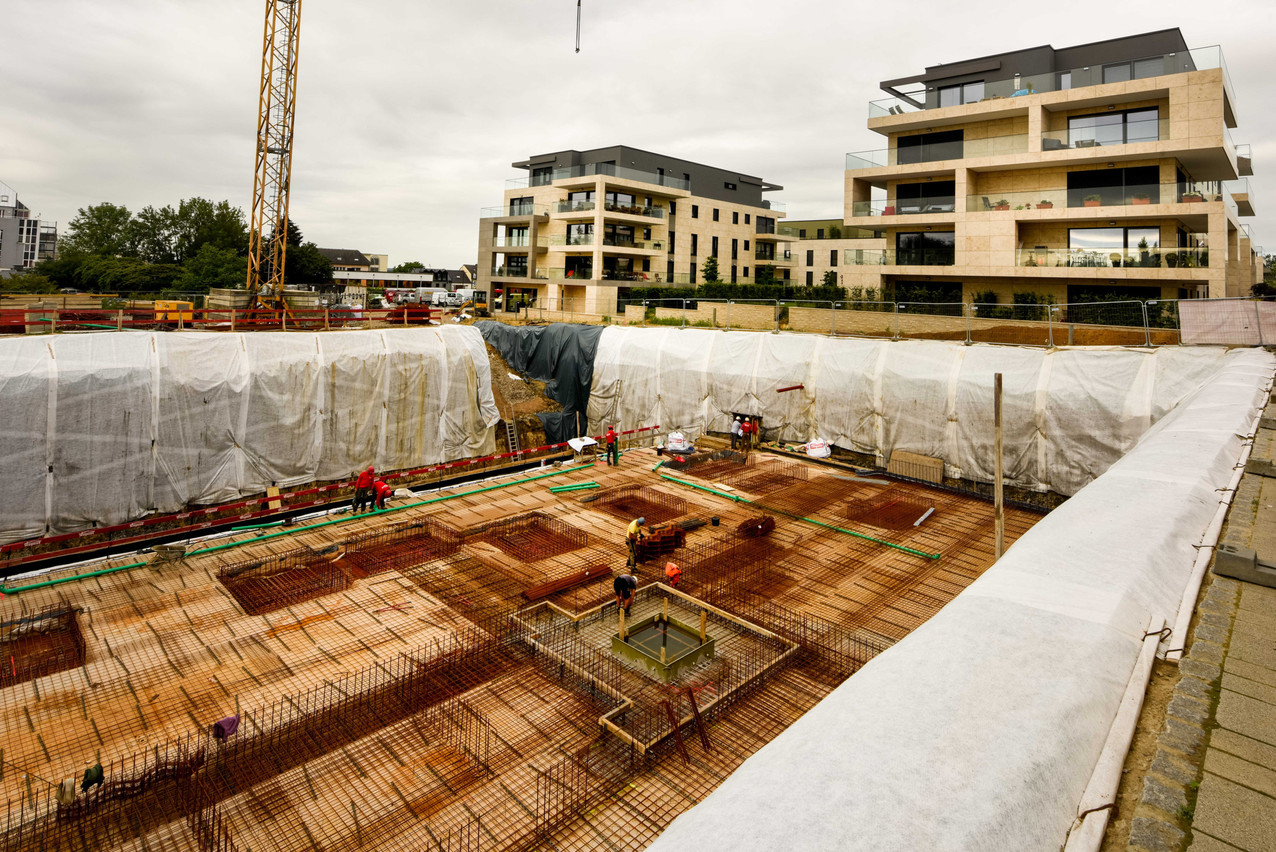Prices that continue to rise for both purchase and rental, falling sales and financial volumes: these are the basic findings of the latest analysis report from the Observatoire de l'habitat (Housing Observatory) regarding the evolution of residential property activity, sales prices and rents in the third quarter of 2022.
What does this mean in more detail?
Housing sales
Overall, activity in the real estate and land markets is down compared to Q3 2021. However, not all segments are affected in the same way.
With a total of 1,307 flat sales, the number of transactions is down by 17.7%, also compared to Q3 2021. The financial volume of these transactions has decreased by 13.4%, which means that the prices of the sold flats have increased.
The decline in the sales of existing flats is -10%.
It is therefore the new build segment (VEFA--vente en état futur d'achèvement) that shows the biggest drop with -36.4% compared to the third quarter of 2021, meaning that only 297 sales were made. This is the lowest number of sales since 2009 and the availability of the Publicité Foncière file. However, the trend is in line with the observations made over the last eight quarters and confirms the combination of factors mentioned by professionals in the sector: rising interest rates which are hampering investment, a drop in households’ purchasing capacity, , etc.
The drop in sales also concerns houses (-12.6% compared to Q3 2021). The financial volume has fallen here, but less sharply, highlighting a rise in prices.
The sale of building plots is experiencing the same phenomenon: -25.1% of sales, but -25% of financial volume. “This reflects a certain stability in the average prices of building plots, which is however difficult to equate with stability in the valuation of these plots: average prices are also influenced by compositional effects (displacement of sales, differences in the surface area and the potential for the construction of the plots sold, etc.),” states the press release from the Housing Observatory.
Housing sales prices
The Statec index covering the sale prices of existing homes and those under construction indicates an increase of 11.1% compared to the third quarter of 2021. This includes +8.3% for existing flats, +7.9% for existing houses and +18.3% for VEFA.
The majority of developers have obviously chosen not to lower the sale prices of marketed properties, even if it means facing difficulties in selling them.
The increase is in line with that of the previous quarters. It is still +2.2% compared to Q2 2023.
The sharp rise in VEFA prices is considered “abnormal.” “Interviews with real estate professionals suggest that a change in the contracting system could partly explain this price increase: until now, developers offered VEFA construction contracts that included a clause indexing prices on delivery based on the Statec construction price index. It seems that several developers have put an end to this system, with the aim of guaranteeing more visibility for the final client in his future price. In return, the price fixed at the time of the signature of the VEFA contract is increased,” analyses the observatory.
In addition, it is necessary to take into account the fall in activity in this segment. “The majority of developers have obviously chosen not to lower the sale prices of marketed properties, even if it means facing difficulties in selling them,” explains the analysis. It also notes that “these price increases relate to notarised deeds recorded in the third quarter of 2022, and therefore to sales agreements signed in the vast majority of cases before the end of July 2022. The effects of the rise in variable rates (later than that of fixed rates), and their impact on access to credit for households will only be reflected in the statistics for the fourth quarter of 2022.” And “while house price inflation remains strong over a year, it is part of a strong consumer price inflation outlook.”
Advertised house rents
Advertised rents for flats rose by +2.1%. Over 12 months, however, the increase in rents remains significantly lower than the increase in house prices.
Advertised rents for houses, on the other hand, have remained perfectly stable over the past twelve months (+0.1% between Q3 2021 and Q3 2022).
As for the increase in rents during the course of the lease, it is “also very moderate: it is even today well below inflation on consumer goods according to Statec figures (+1.7% for the rent index between Q3 2021 and Q3 2022), compared with +6.7% for inflation on consumer prices measured by the [Luxembourg national index of consumer prices] NICP,” concludes the press release from the Housing Observatory.
This story was first published in French on . It has been translated and edited for Delano.
